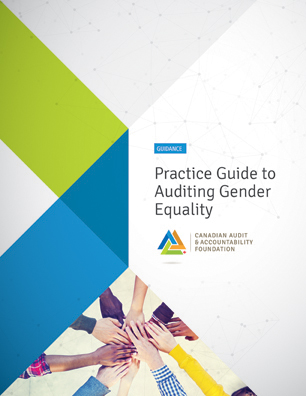Introduction

Welcome to the Practice Guide to Auditing Gender Equality!
Gender equality is important because it allows women and men to enjoy the same rights and to benefit from equal opportunities to realize their full potential to contribute to political, economic, social, and cultural development.
The purpose of this Practice Guide is to provide public sector auditors with current guidance that will help them to plan, carry out and report on legislative and internal audits that address gender equality. By combining theory and practical methodology in this Practice Guide, we seek to inspire high-quality and high-impact audits of gender equality at all levels of government—whether gender equality is the sole focus of an audit or only one of several aspects examined.
The Practice Guide’s focus is on gender equality in the public sector. It includes guidance on how to audit specific gender equality programs or the integration of gender equality considerations in an organization's policies, programs and activities.
The Guide has been designed to meet the information needs of auditors at the various stages of their audit projects. If you are:
- looking for information on what is gender equality, what is gender-based analysis, what are the main international conventions on gender equality, or why audits of gender equality are important;
- starting to plan an audit and wondering where to start;
- planning an audit and searching for:
- examples of questions that can be asked to obtain useful knowledge of business
- indicators that gender equality may be at risk
- information on possible audit approaches
- examples of suitable audit objectives and criteria;
- wondering if you can use benchmarks during the examination phase of the audit;
- ready to draft your report, but could use some ideas on how to effectively convey your observations;
the Practice Guide has answers and guidance for you, only a few clicks away!
The Practice Guide is a flexible tool that has been developed to be used within each audit office’s existing processes and procedures, in accordance with existing auditing and assurance standards. It is therefore a complement to current audit methodology.
Users of the Practice Guide do not have to read all its sections in order. Rather, the Guide has been designed to provide easy access to any section of interest and to allow readers to jump rapidly from one section to any other. Auditors are thus free to consult only the sections that best meet their needs.


